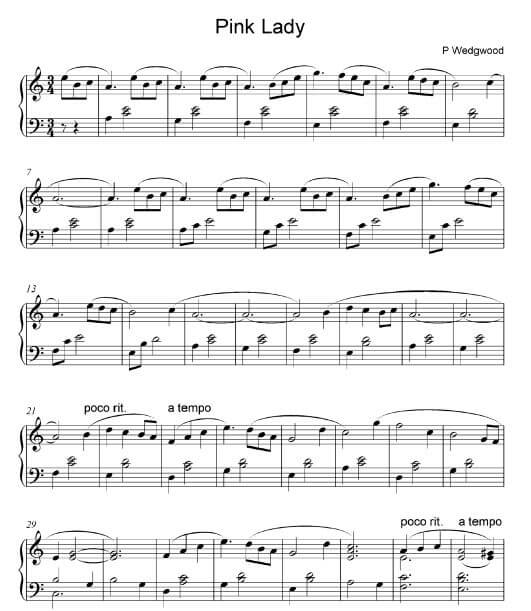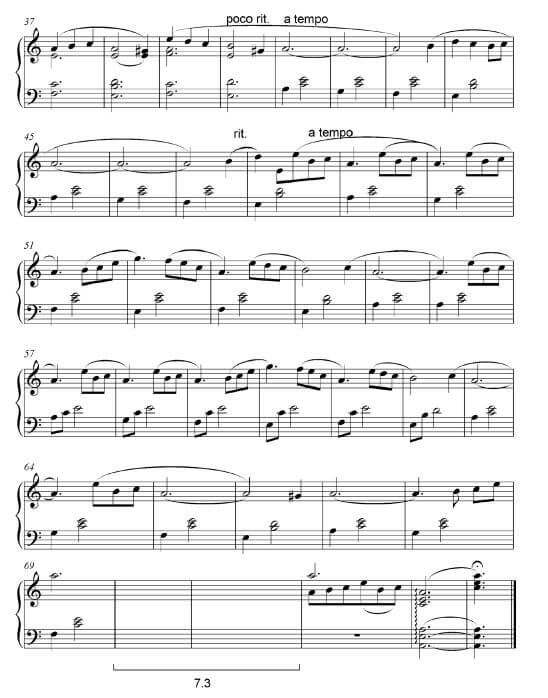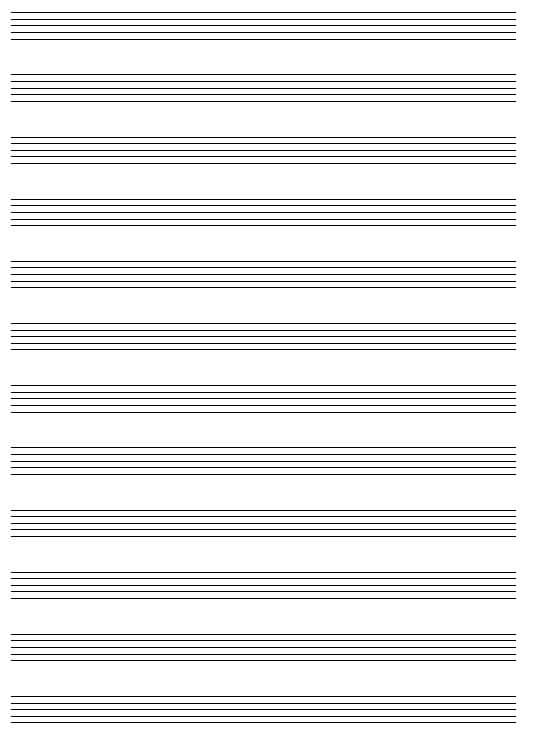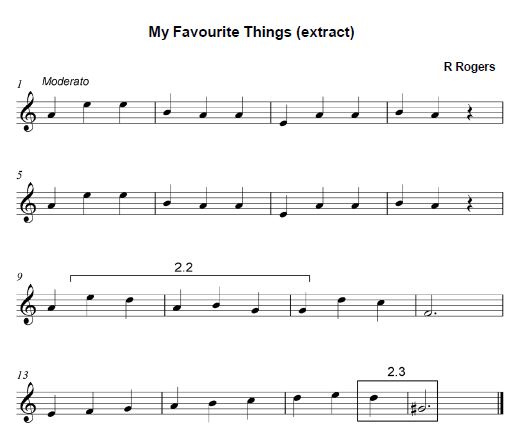MUSIC PAPER 2 GRADE 12 QUESTIONS - NSC PAST PAPERS AND MEMOS NOVEMBER 2016
Share via Whatsapp Join our WhatsApp Group Join our Telegram GroupMUSIC
PAPER 2
GRADE 12
NSC PAST PAPERS AND MEMOS
NOVEMBER 2016
INSTRUCTIONS AND INFORMATION
- This question paper consists of THREE sections:
SECTION A: Aural (10)
SECTION B: Recognition (12)
SECTION C: Form (8) - QUESTION 1, QUESTION 2, QUESTION 3 and QUESTION 7 are compulsory.
- Answer QUESTION 4 (Western Art Music (WAM)) OR QUESTION 5 (JAZZ) OR QUESTION 6 (Indigenous African Music (IAM)).
- Write ALL your answers on this question paper. Use a pencil for music notation and blue or black ink for the other answers.
- This examination will be written while candidates are listening to a CD.
- The music teacher of the centre must conduct the examination in the presence of the invigilator.
- The last page of this question paper is manuscript paper intended for rough work. The candidate MAY NOT remove this page.
- Candidates may NOT have access to any musical instrument for the duration of this examination.
- Candidates must take note of the mark allocation at each question to provide enough information in their answers.
- Write neatly and legibly.
INSTRUCTIONS TO THE PERSON OPERATING THE SOUND EQUIPMENT
|
SUMMARY OF MARKS
SECTION A: AURAL | TOTAL |
QUESTION 1 (COMPULSORY) | 4 |
QUESTION 2 (COMPULSORY) | 6 |
SUBTOTAL | 10 |
SECTION B: RECOGNITION | TOTAL |
QUESTION 3 (COMPULSORY) | 4 |
QUESTION 4 (WAM) OR | 8 |
QUESTION 5 (JAZZ) OR | 8 |
QUESTION 6 (IAM) | 8 |
SUBTOTAL | 12 |
SECTION C: FORM | TOTAL |
QUESTION 7 (COMPULSORY) | 8 |
SUBTOTAL | 8 |
GRAND TOTAL | 30 |
QUESTIONS
SECTION A: AURAL
QUESTION 1
Play Track 1 TWICE in succession. |
1.1 Listen to the melodic and rhythmic phrase. Notate the rhythm of the missing notes in bars 3–4 below.

Play Track 1 TWICE again. Pause for 30 seconds before the repetition. |
Play Track 2 THREE times in succession. |
1.2 Which ONE of the extracts below corresponds to the melody that you hear? Make a cross (X) in the appropriate block.
The extract starts with a two-bar click track.
 (1)
(1)
[4]
QUESTION 2
Play Track 3 ONCE to provide a general overview. |
Listen to the extract from My Favourite Things. Answer the questions that follow.
Play Track 4 TWICE in succession. |
2.1 Identify the difference(s) in articulation between bars 1–8 and bars 9–16. (1)
Play Track 5 FOUR times. |
2.2 The notation of bars 9 and 10 has been omitted at 2.2 in the score. Fill in the missing pitches that correspond to the melody that you hear. (The track starts in bar 5.) (3)
Play Track 6 TWICE. |
2.3 Which interval is formed between the two notes in the block at 2.3? (The track starts in bar 13.) (1)
2.4 Name the cadence with which the extract ends. (1)
[6]
Play Track 7 for a final overview. |
TOTAL SECTION A: 10
SECTION B: RECOGNITION OF MUSIC CONCEPTS
QUESTION 3: GENERAL LISTENING (COMPULSORY)
3.1 You will hear TWO different performances of the same piece: Track 8 and Track 9. Listen to these extracts and answer the questions that follow.
Play Track 8 and Track 9 TWICE in succession. |
Compare these two extracts in terms of the following: (3)
ELEMENT | COMPARISON | |
Track 8 | Track 9 | |
Use of rhythm | ||
Tempo | ||
Instrumentation | ||
Play Track 10 and Track 11 ONCE each. |
3.2 Indicate only ONE feature that you hear in EACH of these tracks. Make a cross (X) in the appropriate block. (2)
FEATURE | Track 10 | Track 11 |
Solo improvisation | ||
Walking bass | ||
Monophonic | ||
Giocoso | ||
Triple metre |
Play Track 12 TWICE. |
3.3 Name any THREE features that indicate that this piece is typically African. (3)
(8 ÷ 2) [4]
Answer QUESTION 4 (WAM) OR QUESTION 5 (JAZZ) OR QUESTION 6 (IAM).
QUESTION 4: WAM
4.1 Listen to the extracts from The Magic Flute by Mozart and answer the questions that follow.
Play Track 13 TWICE. |
4.1.1 With which subgenre in opera music do you associate this extract? (1)
4.1.2 Name the character who sings in this extract. (1)
4.1.3 Where in the opera is this extract sung? (1)
4.1.4 Name the idiophone that you hear in this extract. (1)
Play Track 14 ONCE. |
4.1.5 Which Italian term best describes the tempo changes at the end of this extract? (1)
Play Track 15 TWICE. |
4.1.6 The time signature changes in this extract. Identify the new (second) time signature. Make a cross (X) in the appropriate block. (1)
2 4 | 3 4 | 6 8 |
Play Track 16 ONCE. |
4.1.7 Listen to a section of the overture to The Magic Flute. How does this extract succeed in setting the mood of the opera? (2)
Play Track 17 ONCE. |
4.1.8 Describe the texture of this extract. (1)
4.2 Listen to the extracts below from Beethoven's Symphony No. 6 and answer the questions that follow.
Play Track 18 ONCE. |
4.2.1 What is the function of this extract in Beethoven's Symphony No. 6? (1)
Play Track 19 TWICE. |
4.2.2 Listen to the higher-pitched instruments in this extract. Choose the correct description below that corresponds to the music. Make a cross (X) in the appropriate block. (1)
A legato melody, followed by a non-legato passage on the solo clarinet | |
A legato melody, followed by a legato passage on the solo flute | |
A legato melody, followed by a non-legato passage on the solo flute | |
A legato melody, followed by a legato passage on the solo clarinet |
Play Track 20 TWICE. |
4.2.3 Which TWO of the following Italian terms apply to the music you hear? Make a cross (X) in TWO appropriate blocks. (2)
Crescendo | |
Decrescendo | |
Pesante | |
Grazioso | |
Scherzando |
4.3 Listen to the following extract by Mendelssohn. Answer the question that follows.
Play Track 21 TWICE. |
Indicate THREE items in the list below that are CORRECT in relation to the music that you hear. Make a cross (X) in THREE appropriate blocks. (3)
Inverted pedal point | |
Melody in flute part | |
Ostinato | |
Minor tonality | |
Allegro | |
Adagio |
(16 ÷ 2) [8]
TOTAL SECTION B: 12
OR
QUESTION 5: JAZZ
5.1 Listen to the extracts below by The Brotherhood of Breath and answer the questions that follow.
Play Track 22 ONCE. |
5.1.1 Identify the jazz category. Make a cross (X) in the appropriate block. (1)
Jazz at home | Mbaqanga | Marabi | Jazz in exile |
Play Track 23 ONCE. |
5.1.2 Describe the mood of this extract by referring to the tonality. (1)
5.1.3 Name ONE membranophone that you hear in the introduction. (1)
Play Track 24 TWICE. |
5.1.4 Between which instruments/instrumental sections does the call and response feature in this extract? (1)
5.1.5 Describe TWO characteristics of this piano-playing style. (2)
5.1.6 Name another band that is linked to this style of jazz. (1)
5.2 Listen to Spirits Rejoice and answer the questions that follow.
Play Track 25 TWICE. |
5.2.1 Identify the jazz style. (1)
5.2.2 Give reasons related to the music to motivate your answer to QUESTION 5.2.1. (2)
5.2.3 Name ONE other artist/band that you associate with this style of music. (1)
Play Track 26 ONCE. |
5.2.4 Which solo instrument do you hear in this extract? (1)
5.3 You will hear TWO music extracts: Track 27 and Track 28. Listen to these extracts and answer the question below.
Play Track 27 and Track 28 ONCE each. |
Identify the music style of EACH extract and give ONE reason for EACH answer.
Track 27
Style:
Reason:(2)
Track 28
Style:
Reason:(2)
(16 ÷ 2) [8]
TOTAL SECTION B: 12
OR
QUESTION 6: IAM
6.1 You will hear TWO tracks: Track 29 and Track 30. Listen to these tracks and answer the question below.
Play Track 29 and Track 30 ONCE each. |
Identify the music style of EACH extract and give ONE reason for EACH answer.
Track 29
Style:
Reason:(2)
Track 30
Style:
Reason:(2)
6.2 You will hear TWO tracks: Track 31 and Track 32. Listen to these tracks and answer the question that follows.
Play Track 31 and Track 32 ONCE each. |
6.2.1 With which of the following descriptions do you associate the instrumental ensembles that you hear? Make TWO crosses (X) in the appropriate blocks for EACH track. (4)
DESCRIPTION | Track 31 | Track 32 |
Maskandi band | ||
Marimba band | ||
Sudden dynamic changes | ||
Drum ensemble | ||
Aerophones | ||
A cappella group | ||
Membranophones |
Play Track 33 and Track 34 ONCE each. |
6.2.2 Indicate the similarities between the extracts. Refer to the rhythm and tempo. (2)
Play Track 35 ONCE. |
6.2.3 Identify the vocal techniques that you hear in this extract. (2)
6.3 Listen to the extract and answer the questions that follow.
Play Track 36 TWICE. |
6.3.1 Identify the style of South African music. (1)
6.3.2 Give TWO reasons related to the music to motivate your answer to QUESTION 6.3.1.
Reason 1:
Reason 2: (2)
6.3.3 With which group/artist do you associate this style of music? (1)
(16 ÷ 2) [8]
TOTAL SECTION B: 12
SECTION C: FORM
QUESTION 7
Read and study the questions for THREE minutes.
Play Track 37 ONCE to provide an overview. |
Listen to Pink Lady while you follow the score. 

Play Track 37 ONCE again. |
7.1 What is the form of this piece? (1)
7.2 Motivate your answer to QUESTION 7.1 by giving a schematic layout of the form of this piece. Use the table below. (4)
SECTION | BAR NUMBERS |
02b – | |
Play Track 38 TWICE. |
7.3 Follow the music score from bar 623 to the end. Name the cadence in bars 70–71. (1)
Play Track 39 TWICE. |
7.4 Follow the music score from bar 02 to bar 142 . Notate TWO prominent rhythmic motifs that occur in this extract. (2)
[8]
Play Track 40 for a final overview. |
TOTAL SECTION C: 8
GRAND TOTAL: 30

